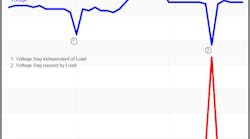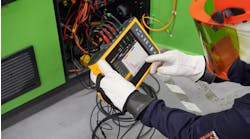There are a handful of ways to find the source of a power quality (PQ) problem. One way is to stare at two pieces of equipment at a facility, and if equipment A turns off equipment B (while it’s running), then it can be concluded that A has an effect on B. But what if equipment A is not located at your facility? Maybe it’s located at another facility miles down the road. It’s already challenging enough to troubleshoot equipment within your facility, but now there is an additional hurdle to the investigation.
Unless this is a harmonic issue, most of the time the electrical current will lead the investigation to the source of the problem.It’s helpful to have a monitoring device that can plot the voltage and current on the same time axis. This provides clarity on when the voltage is reacting or not reacting to the different pieces of electrical equipment in operation. There is one trap that exists, and that is when the voltage sags prior to the current rising. This indicates a system is recovering or responding to the deviation in voltage.




